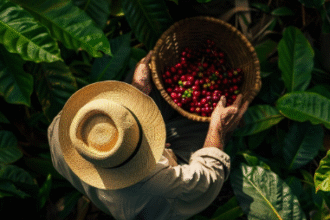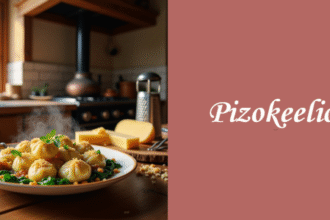Food enthusiasts are constantly searching for new culinary experiences that transport them beyond their everyday dining routines. While mainstream food websites often showcase the same popular dishes, there’s something special about discovering a platform that offers genuine authenticity and cultural depth. xuebaotou.com represents exactly this type of discovery—a carefully curated space where traditional Asian cuisine meets modern accessibility.
Whether you’re a seasoned home cook looking to expand your recipe repertoire or someone curious about exploring authentic flavors from across Asia, understanding what makes certain culinary platforms stand out can transform your entire approach to cooking and eating. The digital landscape has revolutionized how we discover, learn about, and share food experiences, making authentic cultural cuisine more accessible than ever before.
This exploration of xuebaotou.com will reveal why discerning food lovers are turning to specialized platforms for their culinary inspiration, and how the right resource can elevate your understanding of traditional cooking techniques, ingredients, and cultural food traditions.
What Makes xuebaotou.com Stand Out
The culinary website landscape is saturated with generic recipe collections and commercialized food content. However, xuebaotou.com distinguishes itself through its commitment to authenticity and cultural preservation. Unlike mainstream food platforms that often westernize traditional recipes, this platform maintains the integrity of original cooking methods and ingredient combinations.
The site’s approach to presenting Asian cuisine reflects a deep understanding of how food connects to cultural identity. Rather than simply listing ingredients and steps, the platform provides context about the historical significance of dishes, regional variations, and the stories behind traditional cooking techniques.
Exploring Traditional Cooking Techniques
Time-Honored Methods Meet Modern Kitchens
Traditional Asian cooking encompasses a vast array of techniques that have been refined over centuries. From the precise art of dumpling folding to the complex layering of flavors in slow-braised dishes, these methods represent generations of culinary wisdom.
Understanding these techniques requires more than just following recipe instructions. It involves appreciating the science behind fermentation processes, the importance of ingredient sequencing, and the cultural significance of presentation styles. Specialized platforms excel at breaking down these complex processes into approachable steps while maintaining respect for their cultural origins.
Essential Ingredients and Their Sources
Authentic Asian cooking relies heavily on specific ingredients that contribute unique flavors, textures, and aromas impossible to replicate with substitutes. Key components include various types of soy sauce, each with distinct fermentation processes and flavor profiles, specialty vinegars that add depth and complexity, and preserved vegetables that provide umami richness.
The quality and authenticity of these ingredients significantly impact the final dish. Understanding where to source genuine products and how to identify quality markers helps home cooks achieve results that truly honor traditional recipes.
Regional Specialties and Cultural Context
Northern vs. Southern Cooking Traditions
Asian cuisine varies dramatically across different regions, with each area developing distinct characteristics based on climate, available ingredients, and cultural influences. Northern cooking traditions often emphasize hearty, warming dishes with robust flavors, while southern cuisines typically feature lighter preparations that highlight fresh ingredients and delicate seasonings.
These regional differences extend beyond flavor preferences to encompass cooking methods, presentation styles, and even dining customs. Recognizing these distinctions enhances appreciation for the diversity within Asian culinary traditions.
Festival Foods and Seasonal Celebrations
Food plays a central role in cultural celebrations and seasonal observances throughout Asia. Festival dishes often require special preparation techniques and carry symbolic meanings related to prosperity, health, and family unity.
Learning about these ceremonial foods provides insight into cultural values and traditions that extend far beyond the kitchen. Many festival recipes involve community preparation, emphasizing food’s role in bringing people together and maintaining cultural connections across generations.
Modern Applications of Traditional Recipes
Adapting Ancient Recipes for Contemporary Kitchens
Contemporary home cooks face the challenge of preparing traditional dishes using modern equipment and ingredients available in local markets. Successful adaptation requires understanding the fundamental principles behind traditional techniques and finding creative ways to achieve similar results using available tools.
This process often involves experimenting with timing, temperature control, and ingredient proportions while maintaining the essential character of original dishes. The key lies in understanding which elements are crucial to preserve and where flexibility is acceptable.
Health Benefits of Traditional Ingredients
Traditional Asian ingredients often possess remarkable nutritional and medicinal properties that modern research continues to validate. Fermented foods support digestive health, while specific spice combinations provide anti-inflammatory benefits and antioxidant properties.
Understanding these health aspects adds another dimension to traditional cooking, allowing modern practitioners to appreciate both the cultural significance and wellness benefits of authentic preparations.
Building Your Asian Pantry
Essential Staples for Authentic Cooking
Creating authentic Asian dishes at home begins with establishing a well-stocked pantry of fundamental ingredients. This foundation includes various types of rice, noodles, and grains that serve as bases for countless dishes, along with preserved and dried ingredients that add depth and complexity to preparations.
Building this pantry gradually allows home cooks to experiment with different flavor combinations while developing familiarity with how various ingredients interact and complement each other.
Storage and Preservation Techniques
Proper storage of Asian ingredients ensures their longevity and maintains their intended flavors. Different ingredients require specific storage conditions, from temperature-controlled environments for certain oils to humidity considerations for dried goods.
Understanding these storage requirements prevents waste and ensures that expensive specialty ingredients maintain their quality over time, making the investment in authentic ingredients more practical for home cooks.
Learning Through Cultural Immersion
Beyond Recipes: Understanding Food Culture
Authentic cooking extends beyond following recipe instructions to encompass understanding the cultural context surrounding food preparation and consumption. This includes learning about traditional dining etiquette, the significance of certain foods in cultural celebrations, and the role of food in family and community relationships.
This deeper understanding enhances the cooking experience and creates more meaningful connections to the dishes being prepared. It transforms cooking from a mechanical process into a cultural exploration that enriches both the cook and those who share the meals.
Frequently Asked Questions
How do I know if I’m using authentic ingredients?
Authentic ingredients typically have specific characteristics in terms of appearance, aroma, and packaging. Look for products from reputable importers, check for traditional language labeling, and research the specific brands recommended by cultural cooking authorities. When possible, shop at specialty Asian markets where staff can provide guidance on ingredient selection.
Can I substitute ingredients in traditional recipes?
While some substitutions are acceptable, certain ingredients are fundamental to achieving authentic flavors and should not be replaced. Focus on understanding which elements are essential versus which are flexible. When substitutions are necessary, research alternatives that provide similar flavor profiles rather than completely different ingredients.
How do I develop my palate for Asian flavors?
Developing appreciation for new flavor profiles takes time and exposure. Start with milder dishes and gradually introduce more complex flavors. Pay attention to how different ingredients contribute to overall taste, and don’t hesitate to taste ingredients individually to understand their unique characteristics.
What cooking equipment do I need for authentic Asian cooking?
While specialized equipment can be helpful, many traditional dishes can be prepared using standard kitchen tools. Focus on acquiring a few key items like a good wok, bamboo steamer, and sharp cleaver. As your interest and skills develop, you can gradually add more specialized tools.
Embracing Culinary Discovery Through Authentic Platforms
The journey into authentic Asian cuisine represents more than just learning new recipes—it offers an opportunity to connect with rich cultural traditions and expand your culinary horizons. Platforms like xuebaotou.com serve as valuable bridges between traditional cooking wisdom and modern kitchen accessibility, providing the guidance and context necessary for meaningful culinary exploration.
Success in this culinary journey requires patience, curiosity, and respect for the cultural origins of the dishes you’re learning to prepare. Start with simple preparations, focus on understanding fundamental techniques, and gradually build your knowledge and ingredient collection over time.
Remember that authentic cooking is about more than just following instructions—it’s about understanding the stories, traditions, and cultural significance behind each dish. This deeper engagement transforms cooking from a routine task into a meaningful cultural exchange that enriches both your culinary skills and your appreciation for diverse food traditions.

















